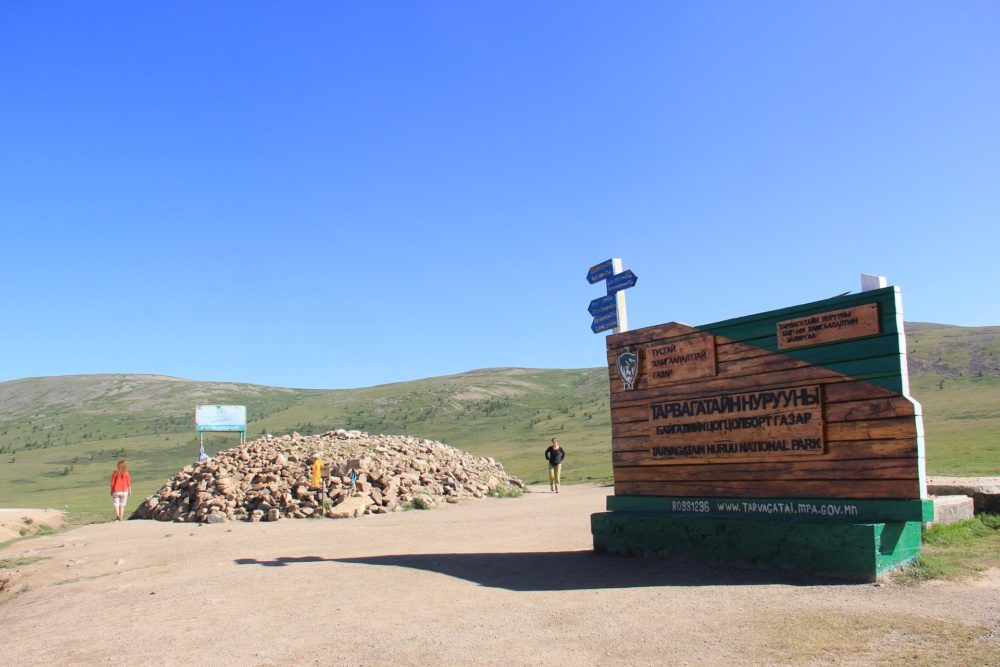What is Ovoo?
Conspicuous heaps of stones can be seen all over the country, mostly one to two meters high: on arterial roads and passes, on mountains and on trees, or also on rivers, lakes, and springs. These are ovoos (also obos), sacred sites built by the Mongols to enjoin a safe journey. They are seen as the abodes of species deities and spirits. If a traveler comes across such an ovoo, he circles it three times clockwise before continuing, collects three stones, and places them on the ovoo together with various offerings.
This can be, for example, dried curds, dairy products, vodka, tea, or milk. The ceremony is an omen of a safe return home. It goes without saying that the offerings must not be removed. Blue riches, so-called khadaks, are usually bound to the ovoos. They are prayer shawls found liberally in Mongolia. They symbolize the sky because Mongolia is called the “land of the blue sky” with an average altitude of 1500 meters.
Tradition
It is believed that in the early times, people used to place signs to signal and warn others about the paths they had traveled, places with abundant crops, places with good conditions for living, or areas with many dangers, which later developed into mounds. When the clan organization was created, disintegrated, or separated from other groups, the mound was responsible for demarcating the territory. In connection with shamanism, the mound became an object of worship and was usually built on top of a mountain.
Ovoo is believed that the place where the mound is built is an energy center, a spirit restorer, a place of contact with the gods and goddesses, and an extraordinary magical space. It has also been understood that everything in nature, such as land, water, plants, animals, and trees, has an owner who takes care of them and protects them.
In mountainous and rocky areas, mounds are built with stones, in areas with few stones, sand, and earth, and in wooded areas with wood. Because they understand that if the mountains, water, animals, plants, and mineral resources owned by Lus Sawdag are mistreated, droughts will occur, livestock will die, and diseases will occur. Lus came to visit the village in the hope that he would be blessed by them and receive their bounties.
Worshiping
When worshiping a mountain with white blood, it is usually worshiped with dairy products and fermented yogurt, while when worshiping a mountain with black blood, it is worshiped with meat juice and alcohol. While worshiping the mound with blood, an animal is slaughtered and placed in front of the mound, ghee, fresh milk, and alcohol are sprinkled around the mound in nature and the earth, and the deity entrusts himself and prays. When worshiping with fire, he piles firewood in front of his pile, makes a fire, chants his name, and offers whole meat to the fire. The more the fire burns, the better it is.
This is because the owner of the pile being worshiped is considered a sign of acceptance of the sacrifice. Later, when the mound was worshiped, festivals were held with wrestling, archery, and horse racing. The mountain should be worshiped on the days set by the government and the elders, or on the spring and autumn days when there are auspicious days with the descent of the moon.
Shamanism
If shamans are participating in the mass ritual, they will vomit first, and if monks are participating, they will read books first. In shamanism, there is a pile of virgins. Before vomiting, the head of the mound was invited, the owners of the land and water were called to talk, the sun circled the mound nine times, and before that, they bowed down nine times and prayed and offered three sprats.






